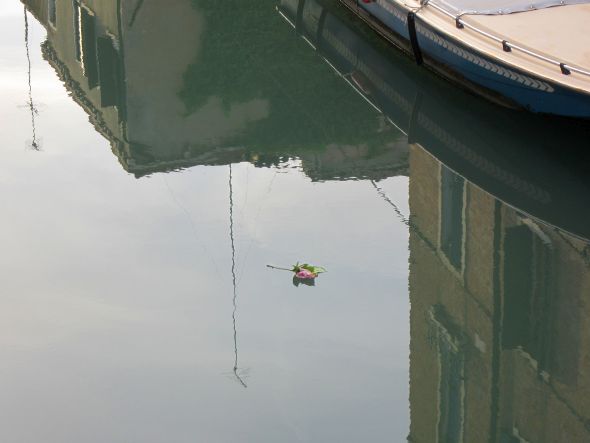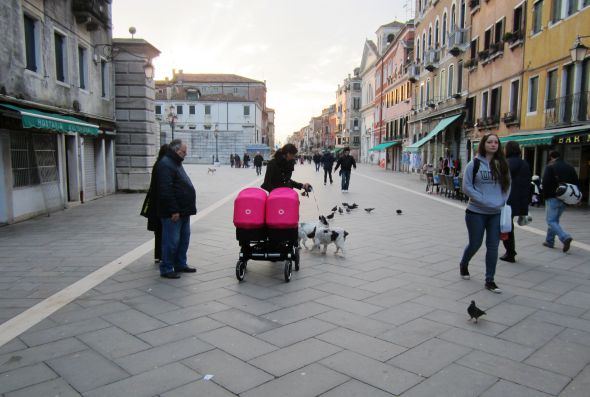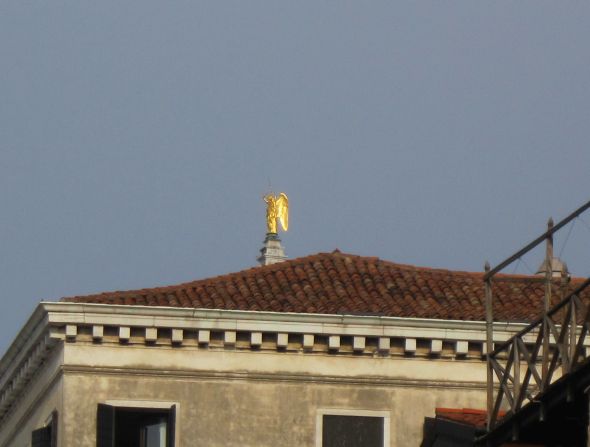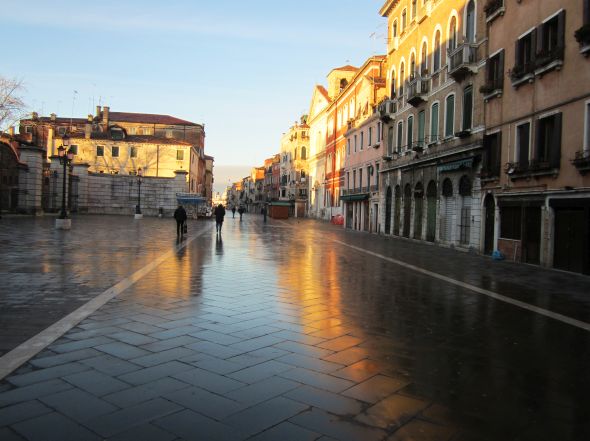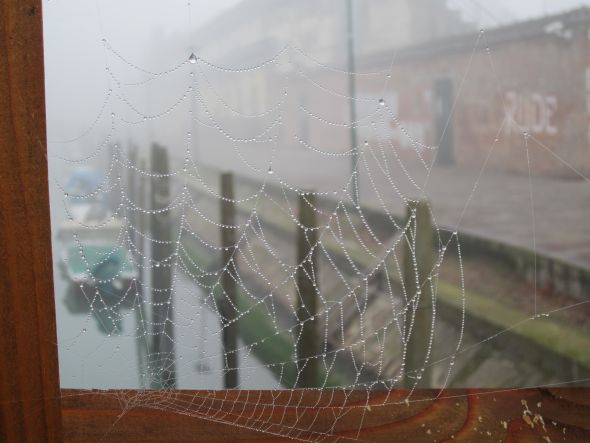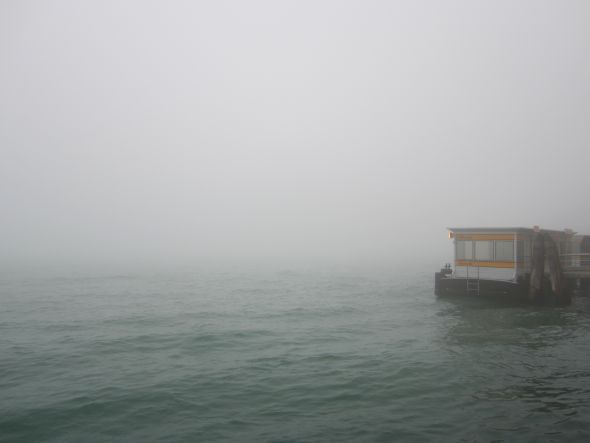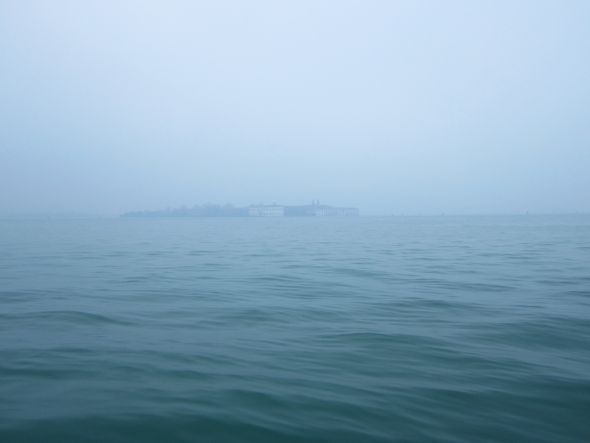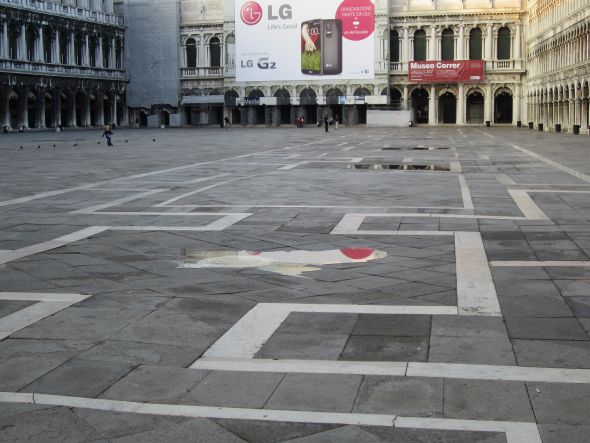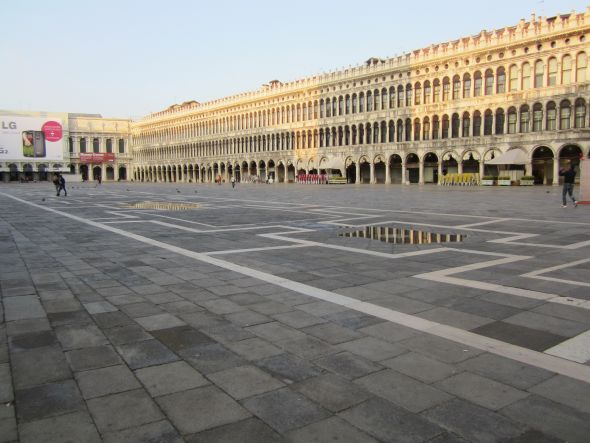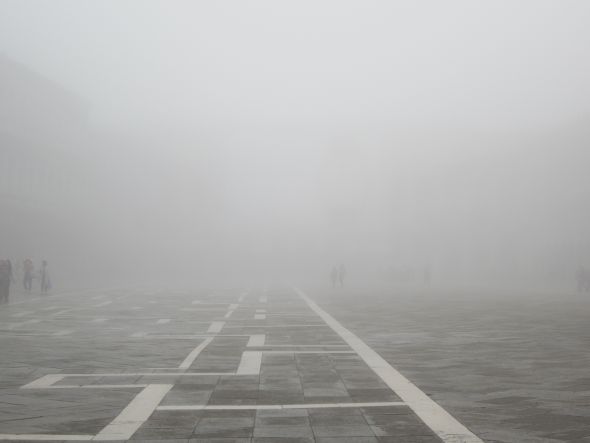Every so often, someone will say/ask/opine: “You live in Venice? I really envy you! It must be so wonderful! What’s it like?”
Because dreams are fragile and precious, and we all need more of them, not fewer, I usually answer in a generic way, while still lingering somewhere in the vicinity of the truth. Yes, it’s beautiful; yes, it’s amazing; yes, it’s unique, etc. etc. But I usually limit myself to one word: “Arduous.” Not all day, not every day, and the rewards outweigh the drawbacks. Also, “arduous” is simpler than “obstacle course.”
No cars — how great! No elevators — how somewhat less great! And so on. With all due respect to every person who has ever lived, in every military in every country, here is a glimpse of what a particularly demanding day here feels like.
There are at least two ways to say “obstacle course” in Italian.
The simpler and less emotionally-loaded term is “corso ad ostacoli.” You can figure that out even if you don’t speak the language.
The other, which reflects more clearly the reality as she is lived, is “percorso di guerra.” If you know that “guerra” means “war,” you don’t need to examine the subtleties of “percorso.” However, my dictionary renders this as “assault course.”
You can already see how “arduous” is better. I’ll give you a little example of what that can mean in ErlaWorld.
A few weeks ago I got a new desk. I ordered it online, and it was delivered to our door in a box (assembly required). Just like in the real world.
But then I needed a new bookcase to accompany it. Space here being measured in micrometers, I had to be cunning and clever regarding materials and dimensions and cost. So I spent days researching “bookcases.”
Nothing on Amazon, nothing from IKEA. Nothing from my other two or three dependable vendors, such as Staples. This was annoying.
Hacking my way through the online underbrush, I managed after several hours to locate a company — Leroy Merlin, for the record — which sells the steel-chrome wire elements I wanted, in dimensions that would work. But this company did not enable online orders. I had to go to the store. The store is in Marghera.
We do not have a car, so the bus is our only option, short of asking for a ride from somebody, which is always more trouble than it’s worth. So the bus, in itself, is no novelty to me, and on the whole it’s not a hugely inconvenient way to get from here to there. But this expedition was going to be into uncharted territory.
I checked maps, I checked the ACTV website. Then I called the store to ask which bus would bring me from Venice to them. “Take any bus going along the Brenta, or to Padova,” I was told. And get off where? “The stop called ‘Industria.'”
The ACTV website listed one bus that made sense, but did not identify a stop called “Industria.” (Much later, which is typical in these sagas, I found a stop called “Incro. via Colombara,” or intersection with via Colombara, which would have solved my dilemma. But I was still working on the assumption that the man knew what he was talking about.)
At this point I began to notice the familiar sensation of moving forward, but on terrain which felt progressively less stable, so to speak. It’s the point at which a project goes from “time-consuming but logical” to “perplexing,” and onward to “You’ll just have to figure it out for yourself.”
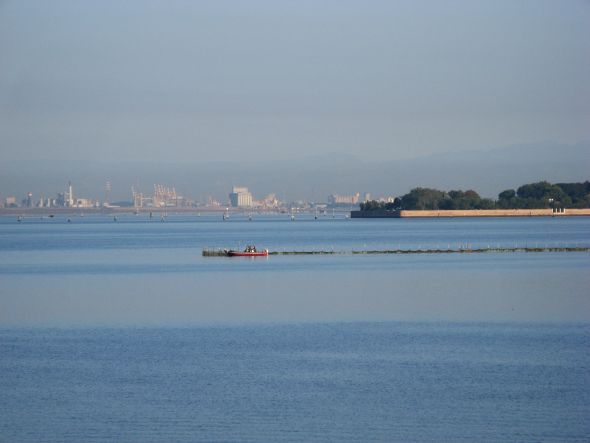
Lino and I left the house at 1:30. We got to Piazzale Roma in time to miss the bus that left at 2:10, so we took the one that left at 2:25.
We asked the driver to let us off at “Industria.” He looked blank. “Do you know where the “Industria” stop is?” He shrugged.
A look at this map will give a general overview of the terrain to be explored. Our destination was just above the traffic circle in the center, where “SS 11” can be seen. https://maps.google.it/maps/ms?ie=UTF8&t=h&oe=UTF8&msa=0&msid=101654411990271013228.000479bf30e5e06038cf8
I had consulted several maps, so I had a general idea of the territory, but not the bus stops. So we got off two stops early, as we quickly discovered. We walked back to a bar where we could get some details. Retraced steps and proceeded on foot, as per plan, to the store. It only took about 15 minutes, but as usual in unfamiliar situations, it felt like more. So we were at the store by 3:00.
The map on the ACTV website is only relatively clear (blue line). We should have descended at stop #13, but instead got off at #11. Bonus: Each bus stop has a sign with a number, but the number does not correspond to the numbers on the ACTV map. So far, so normal.
If you ever need to know, there are six stops on via Fratelli Bandiera, listed as “1/6,” “2/6” and so forth. Then the road changes its name to SS 11 (State Road 11), or “via Padana,” which is also not marked on the map. And the numbering begins again: “1/6,” “2/6,” etc. As for “Intersection with via Colombara,” the street name is not written on any surface within a radius of 40,000 miles. It might be written on the side of a yurt on the Golodnaya Steppe.

Finally inside the store, we went through the identifying-the-components phase and were well underway with the salesperson till I asked about getting a “controventatura.” He looked blank. (Maybe I should have asked him where the “Industria” stop was. Oh wait — he already knew. He walks to work from the bus every day.) This wasn’t encouraging — not only is it his language, it’s his job.
I had to explain that it’s a brace.
He said they didn’t have them.
I mentioned that they were listed for sale on their website. But this meant nothing because the website evidently is created in France, the company’s home base, and the goods are distributed according to some system. The “bookcases in Italy don’t need braces” system.
Complete order: Four metal stanchions 180 cm (70 inches) high. Four metal shelves 121 cm (47 inches) long and 20 cm (8 inches) deep.
A package of four small round wheels.
Total cost 141 euros, which is not important. What is important is what we were told when we asked the charge for having it delivered to our little hovel in the historic center of the most beautiful city in the world.
“120 euros,” was the reply.
Rico, give me options!
The store could deliver our modest amount of merchandise to Tronchetto, and we could pick it up there; cost, a paltry 60 euros.
We could have rented a car for about half that, to drive to the store and bring our stuff to Tronchetto. But that would have added way too many more moving parts to the already self-complicating project.
So we paid the 60 euros, and were told it would be delivered to Tronchetto next Tuesday (a week to wait for this minuscule amount of merchandise? They must have been waiting for somebody to order a new set of doors and windows, or 90 bidets, or something else that would make the trip worthwhile.)
We walked back to the bus stop, where the bus was just pulling away. We waited for about half an hour, standing on the shoulder of the road in one of the more dreary parts of the Venetian hinterland as traffic hurried past us. A scattering of small, monotonous houses ahead of us, interspersed with abandoned land. Behind us, the deteriorating grey hulks of cast-off factories, part of the now mostly derelict Industrial Zone which once provided work to thousands. Up the road, more houses, some bar/cafes, intermittent small hotels, and the church of Gesu‘ Lavoratore, or Jesus the Worker.
As the sun dropped, the girls began to appear, strolling along the roadsides to lure commuters, truckers, taxi-drivers, or anyone else who had the time and the space to pull over. Now I understand the hotels.
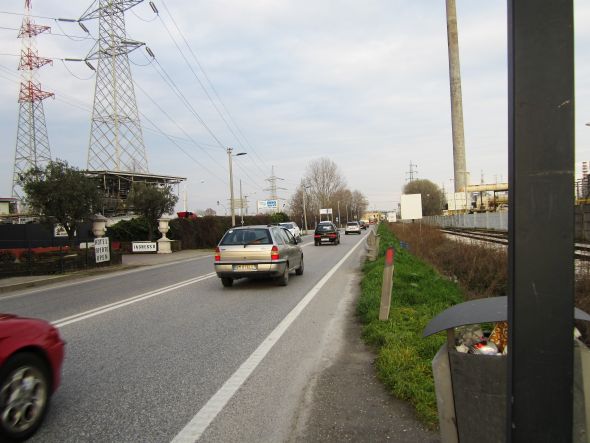
Finally the bus came. In 20 minutes or so we were at Piazzale Roma. We walked to the vaporetto stop. We waited with about 180 other people to get on the next vaporetto. We managed it. It took 25 minutes to reach the Giardini stop. Then we walked to our house.
We walked in at about 5:30. We’d been on our feet for almost the entire four hours of this little Venetian pilgrimage. Part of that time was spent discussing what sort of boat we were going to be able to wrangle in order to get to Tronchetto and pick up our stuff and get it home.
If you don’t own a motorboat, which we don’t, the options are to borrow one, with or without driver (raising the question of remuneration), or… row. I think we’re probably going to row all the way over and back.
Yes? A question in the back? Why didn’t we carry our purchase back to Venice on the bus and vaporetto? Because of the 180-cm stanchions. Lino was convinced that they would be a big problem on the vaporetto, not to mention the bus.
However, we saw someone on the bus hauling a pair of skis and a big IKEA bag with two pairs of ski boots; I pointed him out to Lino saying, “Well, nobody minds him carrying his skis on the bus, and they’re no longer than the stanchions.”
Lino retorted that the bus wasn’t crowded, which wasn’t going to be true of the vaporetto; in any case, logic is a frail reed — you can’t lean heavy arguments against it. Besides, we both know that it’s the marinaio (the person who ties up the boat at each stop) who gets to decide what to allow on board.
A plumber once told us that he was about to get on the vaporetto one morning with his cart loaded with his tools, and the marinaio told him he couldn’t get on.
“The vaporetto was half-empty,” the plumber said. “So I asked him why?’
“He told me, ‘Because I said so.'”
I didn’t especially want to have to wait on the dock with my stanchions, which in fact are no higher than plenty of people, till a marinaio arrived who wouldn’t consider my cargo excessive. I would have risked it, but Lino drew the line.
Now I have to start thinking about how I can construct a brace, seeing that there are none to be had, not even for ready money.
